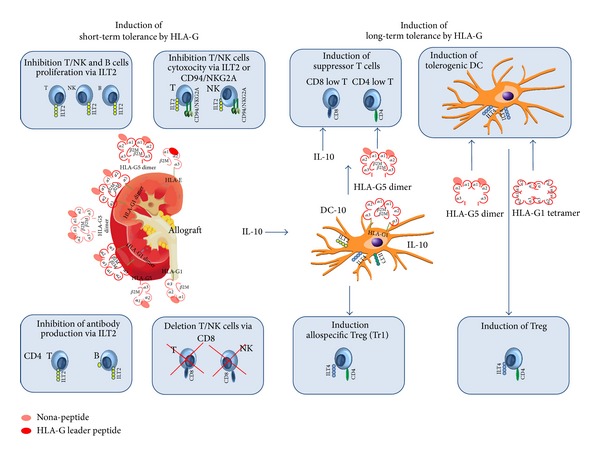Figure 1.

Induction of short- and long-term tolerance by HLA-G. Short-term tolerance will be achieved by HLA-G via interaction of allograft derived monomeric or dimeric β2-associated HLA-G1 and HLA-G5 molecules with the ILT2 receptor on T, NK, and B cells resulting in the inhibition of cytotoxicity, proliferation, or antibody production. Short-term tolerance can be indirectly induced by HLA-G via the presentation of HLA-G specific leader peptide through HLA-E and its interaction with the cognate inhibitory receptor heterodimer CD94 and NKG2A on T and NK cells subsets. The interaction of HLA-G5 with CD8 coreceptor on certain T and NK cell population leads to the deletion of these cells. Long-term tolerance will be achieved by the induction of different types of regulatory T (Treg) cells. Allospecific Treg (Tr1) will be generated by so-called DC-10 cells expressing ILT2, 3, 4 receptors together with β2-free or -associated HLA-G1 via a ILT4/HLA-G pathway. Suppressor T cells expressing low CD4 or CD8 coreceptors are induced in the presence of HLA-G5 molecules together with IL-10 or HLA-G positive antigen presenting cells. The interaction of non-β2-associated HLA-G5 dimers or HLA-G1 tetramers with ILT4 antigen presenting cells results in the induction of tolerogenic DC, which favours the induction of Tregs.
